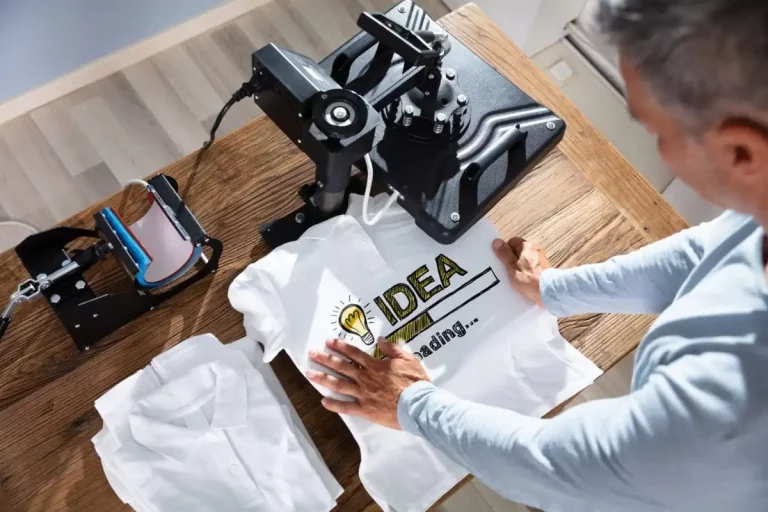High-End Silk Screen Printing for Premium Garments
High-End Silk Screen Printing for Premium Garments
Blog Article
Screen Printing Uncovered: Everything You Required to Understand About T-Shirt and Garment Printing Methods
Screen printing is an interesting approach that integrates art with strategy, offering endless opportunities for creativity. All set to check out the necessary elements that make display printing an art type?
The Basics of Display Printing: Just How It Works
When you dive into display printing, you'll find it's both a scientific research and an art. At its core, screen printing includes creating a pattern, or display, that enables ink to pass through only in particular areas.
Following, you'll mix your inks and prepare your printing surface area. Setting the screen over the material, after that utilize a squeegee to push ink via the screen onto the garment. This procedure requires precision, as you desire clear, vibrant prints. After printing, you'll treat the ink with warmth, guaranteeing it sticks to the textile and lasts through laundries. Each action is vital, and mastering them will boost your screen printing abilities, transforming simple garments right into unique, expressive items.
Sorts Of Screen Printing Strategies
As soon as you understand the essentials of screen printing, it's time to explore the various methods that can elevate your styles. One prominent technique is typical display printing, where ink is pressed via a stenciled display. This strategy is excellent for vibrant, vibrant colors. There's water-based ink printing, which offers a softer feeling and is environment-friendly, yet it calls for a various technique to healing.
If you're aiming for fine details, think about discharge printing. This technique removes color from the textile, leaving a soft, classic appearance. An additional choice is plastisol printing, understood for its toughness and dazzling shades, making it a preferred for numerous brand names. Experiment with halftone printing to create slope effects and intricate designs. Each strategy has its one-of-a-kind appeal, so don't hesitate to attempt them out to locate what fits your style best!
Essential Tools for Display Printing
To achieve magnificent results in screen printing, having the best equipment is essential. You'll need a strong display printing frame, which holds the mesh that transfers your style onto the garment. Next, invest in top notch mops; these are necessary for using ink uniformly across the display.
Picking the Right Inks and Products
When picking inks and products for display printing, you require to take into consideration the kind of ink that functions best for your job. Believe about fabric compatibility to guarantee your designs look terrific and last long. Additionally, discover eco-friendly ink options to make your printing procedure a lot more sustainable.
Sorts Of Screen Inks
Picking the right screen ink is essential for attaining vivid, long lasting prints that fulfill your task's requirements. There are several kinds of screen inks to check out. Plastisol ink is popular for its flexibility and convenience of use, providing outstanding color opacity on dark textiles. Water-based ink, on the various other hand, uses a softer feel and is environmentally friendly, making it perfect for those seeking to lessen their environmental effect. Discharge inks remove color from the material, causing a soft, vintage appearance but call for certain handling. Finally, specialized inks, such as metallic or glow-in-the-dark, can include unique impacts to your styles. Review your project requirements and pick the ink that aligns ideal with your desired end result.

Fabric Compatibility Considerations
Comprehending textile compatibility is essential for attaining high-quality screen prints, specifically considering that various materials react uniquely to different inks. When choosing inks, consider the fabric type-- cotton, polyester, or blends. For cotton, water-based inks work well, providing softness and breathability. Polyester, on the various other hand, usually requires plastisol inks for far better attachment and lively colors. You may need to use a mix of both types if you're publishing on blends. Constantly evaluate your inks on example material to assure they stick appropriately and maintain shade honesty. Additionally, bear in mind that textile weight and appearance can influence the last outcome, so choosing the right ink and material combination is crucial for your project's success.
Eco-Friendly Ink Options
Green inks are becoming a popular choice for display printers that desire to minimize their environmental impact while keeping top quality. When selecting inks, think about water-based inks, which are less dangerous and much easier to cleanse up contrasted to traditional solvents.
Additionally, try to find inks made from renewable sources, such as soy or vegetable-based alternatives. By picking the appropriate inks and materials, you'll not only create sensational styles however additionally add to an extra lasting printing process. Make the switch, and your prints will certainly mirror your dedication to the atmosphere!
Preparing Your Design for Screen Printing

File Format Requirements
To guarantee your layout looks sharp and vibrant on fabric, you'll require to pay close focus to file format requirements for screen printing. Make sure your layout has a clear background to avoid unwanted white sides on your prints. Keep color settings in mind; CMYK is common for display printing, so transform your RGB makes appropriately.
Color Splitting Up Techniques
Color separation is a crucial action in preparing your design for display printing, and understanding it can greatly enhance your print quality. You'll need to damage your style into private shades, as each shade needs a different display during printing. This accuracy not only ensures accurate color depiction but likewise simplifies the printing procedure.
Resolution and Dimension
Accomplishing the very best cause screen printing site web begins with assuring your design has the right resolution and size. Preferably, your art work needs to be at least 300 DPI (dots per inch) for sharp, clear prints. Your final item could look pixelated and amateur. if you utilize lower resolution.
When it pertains to dimension, think about the measurements of your print location. Design useful content your art work to match the final print size, ideally creating it in the real measurements you'll be printing. By doing this, you'll stay clear of any unexpected scaling concerns.
Constantly examine your style in both vector and raster formats. Vector graphics can be scaled without losing top quality, making them perfect for display printing. Preparing correctly will guarantee your style looks outstanding on every garment!
Step-by-Step Screen Printing Refine
Display printing is a vibrant process that allows you to create vivid layouts on different surfaces. To get begun, you'll need a screen, solution, and your chosen ink. First, prepare your display by cleaning it thoroughly. Next off, use the solution evenly and allow it dry in a dark location. Once dry, subject your display to light with your layout placed on it, which will certainly harden the solution where the light hits, creating a stencil - screen printing kit.
After washing out the unexposed emulsion, your display is prepared. Establish it up on your printing surface area and align your garment beneath it. Pour ink onto the display and utilize a squeegee to press the ink via the stencil onto the fabric. Raise the display carefully and let the print completely dry. Heal the ink utilizing warm to assure resilience. That's it! You have actually effectively display published your design.
Tips for Successful Screen Printing Projects
While you're diving right into your display printing tasks, bear in mind that preparation is vital to success. Begin by gathering all your products-- inks, helpful site mops, screens, and garments. A tidy work area helps prevent undesirable mistakes, so neat up before you begin.
Next, verify your art work is high-resolution and effectively sized for your garment. Examine your display for proper exposure and tidy it completely to stay clear of spots. When blending your inks, comply with the supplier's guidelines to accomplish the right uniformity.
During printing, apply also stress with your squeegee for consistent results. Don't rush; take your time to confirm each print satisfies your requirements. After printing, allow your garments completely dry totally prior to dealing with or packaging them.
Last but not least, constantly maintain a sample of your work for future recommendation. This way, you can evaluate your progression and improve your techniques gradually. Satisfied printing!

Often Asked Concerns
Exactly how Lengthy Does It Require To Establish a Screen Printing Work?
Setting up a screen printing job normally takes about 30 minutes to an hour. You'll prepare the displays, mix inks, and change journalism. The time varies based on complexity and experience, so remain arranged!
Can I Publish on Various Textile Enters Utilizing the Very Same Strategy?
Yes, you can publish on various fabric types utilizing the exact same strategy, yet you'll need to change your settings and inks. Some textiles absorb ink in a different way, so experimenting assurances the most effective outcomes for each product.
What Are Common Blunders to Avoid in Screen Printing?
When screen printing, stay clear of common mistakes like utilizing the incorrect ink, disregarding proper direct exposure times, or skipping pre-press checks. Always check your arrangement and maintain tidy screens to guarantee top quality outcomes each time.
How Can I Appropriately Tidy and Maintain My Screen Printing Equipment?
To appropriately clean and maintain your display printing devices, you need to routinely wash displays with appropriate solvents, check squeegees for wear, and ensure all tools are saved completely dry and dust-free. Consistency stops pricey repair services and improves efficiency.
Is Display Printing Environmentally Friendly Compared to Various Other Approaches?
Screen printing can be much more eco-friendly than other methods, specifically if you use eco-conscious products and water-based inks. By picking sustainable products and practices, you lower waste and minimize your impact on the planet.
Screen Printing Uncovered: Everything You Need to Know Regarding Tee Shirt and Garment Printing Methods
At its core, display printing entails producing a pattern, or screen, that enables ink to pass with just in certain areas. Setting the display over the material, after that make use of a squeegee to press ink via the display onto the garment. One preferred method is traditional display printing, where ink is pushed with a stenciled screen.When selecting inks and materials for display printing, you require to take right into account the type of ink that functions ideal for your task.
Report this page